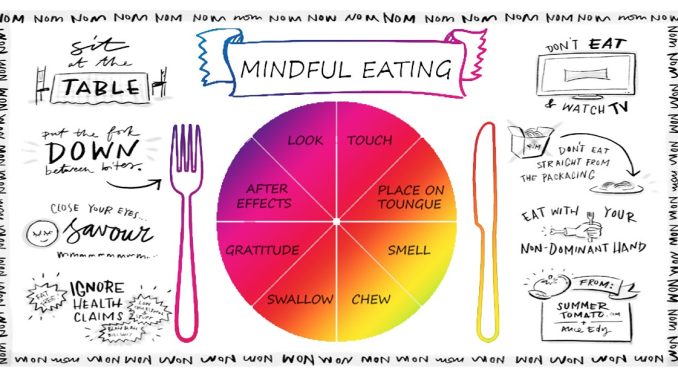
In today’s fast-paced world, meals are often treated as an afterthought—something squeezed between meetings, eaten while scrolling through emails, or consumed in front of a screen without a second thought. This disconnection from the act of eating has consequences that go beyond digestion. It affects how we nourish ourselves, how we relate to food, and even how we experience satisfaction. Adding mindfulness to meals isn’t about adopting a rigid set of rules or turning every bite into a meditation. It’s about cultivating awareness, presence, and intention in a way that enhances both physical health and emotional well-being.
Mindfulness, at its core, is the practice of paying attention to the present moment without judgment. Applied to meals, it means engaging with the experience of eating—tuning into the flavors, textures, and sensations, as well as the thoughts and emotions that arise. This shift in attention can transform a routine activity into a meaningful ritual. Instead of rushing through lunch while multitasking, imagine sitting down, taking a breath, and noticing the aroma of your food. That simple act of pausing creates space for connection, not just with the meal itself but with your body’s needs and responses.
One of the most immediate benefits of mindful eating is improved digestion. When we eat in a state of stress or distraction, the body doesn’t fully activate the parasympathetic nervous system, which is responsible for rest and digestion. By slowing down and focusing on the meal, we signal to the body that it’s safe to digest. This can lead to fewer digestive issues, better nutrient absorption, and a greater sense of satisfaction after eating. It’s a physiological response rooted in how the brain and gut communicate, and it underscores the importance of environment and mindset during meals.
Mindfulness also helps recalibrate our relationship with hunger and fullness. In a culture dominated by external cues—portion sizes, diet plans, and social norms—it’s easy to lose touch with internal signals. Mindful eating encourages us to ask questions like: Am I truly hungry? What does fullness feel like in my body? These questions aren’t meant to be answered intellectually but felt experientially. Over time, this practice builds trust in the body’s cues, reducing the likelihood of overeating or undereating and fostering a more intuitive approach to nourishment.
The emotional dimension of meals is another area where mindfulness can have a profound impact. Food is deeply tied to comfort, celebration, and even coping. By bringing awareness to the emotional context of eating, we can begin to differentiate between physical hunger and emotional hunger. For example, reaching for a snack after a stressful meeting might be less about needing fuel and more about seeking relief. Mindfulness doesn’t judge these impulses—it simply observes them. That observation creates a moment of choice, where we can decide whether to eat, pause, or find another way to address the emotion. This kind of emotional intelligence is invaluable, not just for personal health but for professional resilience.
Incorporating mindfulness into meals doesn’t require dramatic changes. It can begin with small shifts, like sitting down to eat rather than standing or walking, chewing more slowly, or putting down utensils between bites. These actions may seem trivial, but they anchor attention and disrupt autopilot behavior. Over time, they create a new rhythm—one that prioritizes presence over speed. In business, we often talk about the importance of intentionality and focus. The same principles apply here. When we bring intention to meals, we elevate the experience from routine to restorative.
The social aspect of eating also benefits from mindfulness. Sharing a meal with others is an opportunity for connection, but that connection is often diluted by distractions. Phones on the table, background noise, or fragmented conversations can make the experience feel transactional. Mindful eating invites us to be fully present with others, to listen, engage, and appreciate the shared moment. This presence fosters deeper relationships and a sense of community, which are essential for both personal fulfillment and professional collaboration.
Mindfulness can also influence food choices. When we’re attuned to how different foods make us feel—physically and emotionally—we begin to gravitate toward options that support our well-being. This doesn’t mean adhering to a strict diet or eliminating indulgences. It means making choices from a place of awareness rather than impulse. For instance, noticing that a heavy lunch leads to afternoon sluggishness might prompt a shift toward lighter, more energizing meals. These adjustments are guided by experience, not external rules, and they tend to be more sustainable over time.
Ultimately, adding mindfulness to meals is about reclaiming a sense of agency. In a world that often encourages disconnection—from our bodies, our emotions, and even our time—mindful eating is a way to come back to ourselves. It’s a practice that doesn’t require extra time or resources, just a willingness to be present. And in that presence, we find not only better health but greater satisfaction, clarity, and balance. Whether you’re navigating a demanding career, managing stress, or simply seeking more joy in everyday life, the way you eat can be a powerful anchor. Meals become more than fuel—they become moments of nourishment, reflection, and connection.